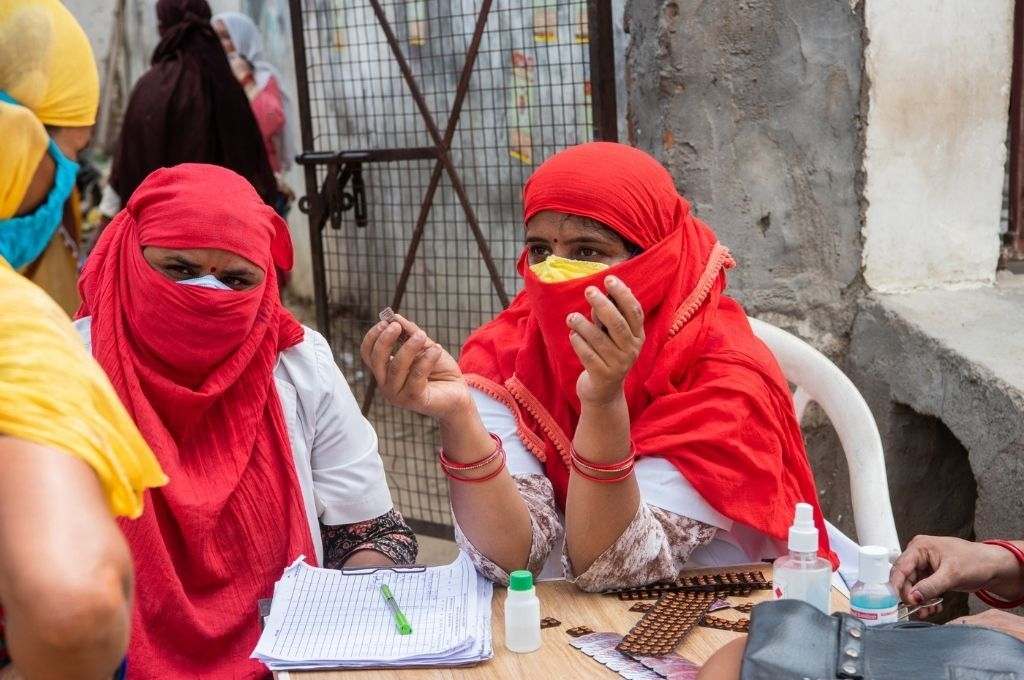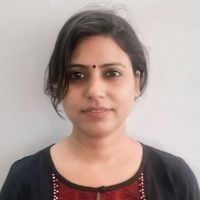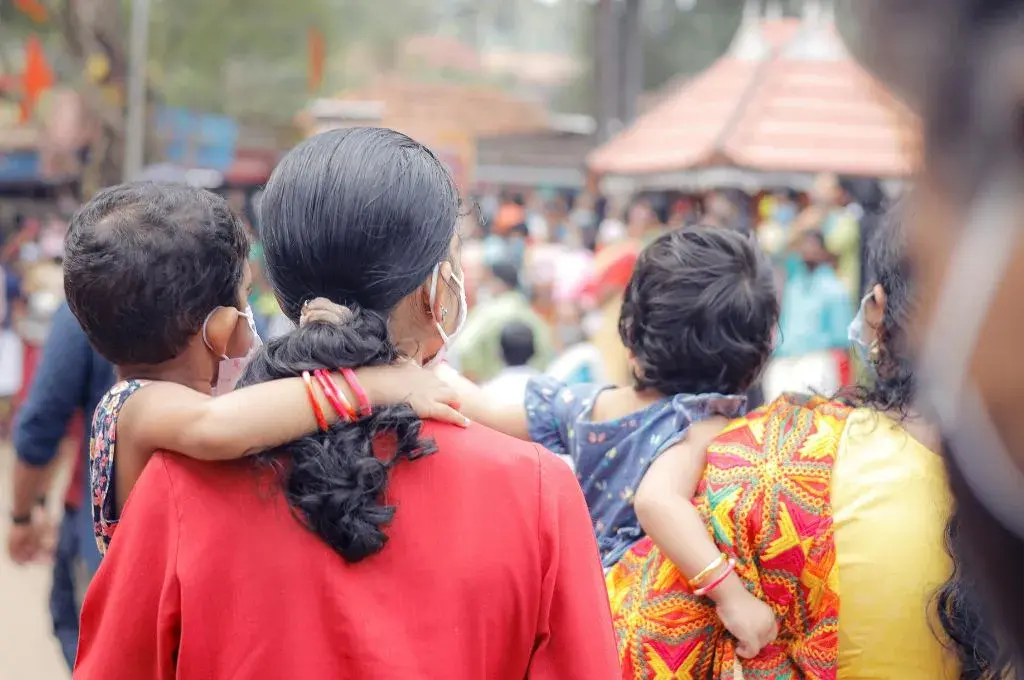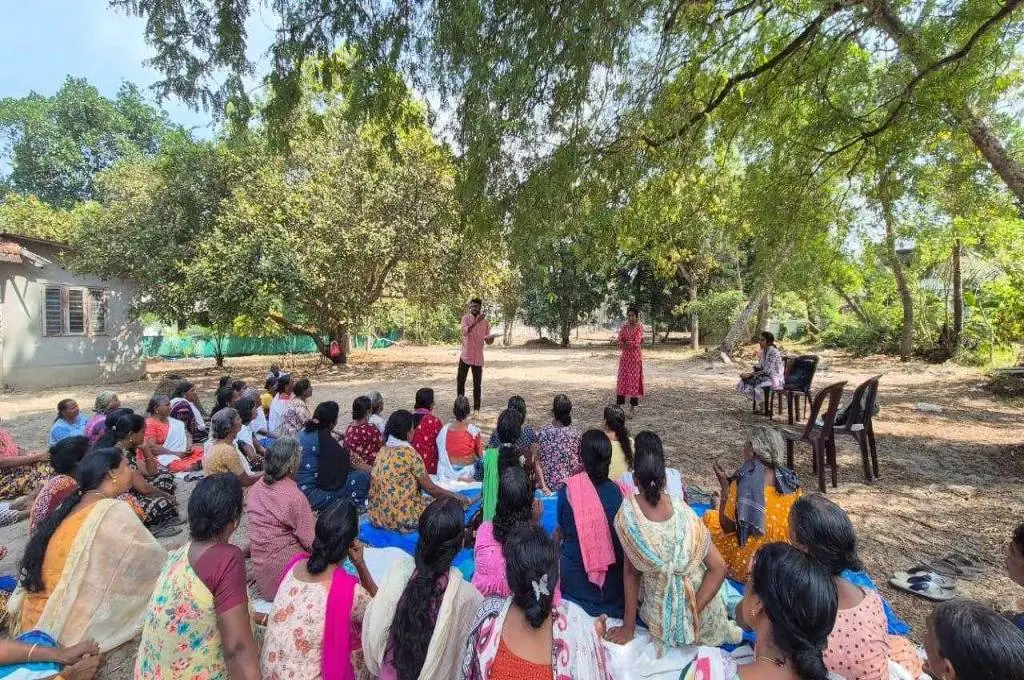Although community health workers have been the backbone of the fight against Covid-19 in India, there has not been sufficient focus on their well-being and working conditions. Based on a survey in the Bundelkhand region, among the poorest regions in India, Saha et al., examine the perspectives and experiences of community health workers, and the socioeconomic hurdles faced by them during the pandemic.
The national lockdown announced in March 2020 led to an exodus of migrant workers from cities to their villages and towns, as a result of which public services and public health workers were put under significant strain. Services such as regular immunisations, anganwadi (childcare)1 services, and schooling were affected as workers in these sectors were diverted to deal with Covid-19 containment and response efforts such as contact tracing, community surveillance, and promotion of safe practices. These crucial responsibilities in handling the pandemic make it imperative to understand the perspectives and experiences of community health workers (CHWs), especially those working in rural India.
Bundelkhand is one such region, which witnessed many migrants returning from cities. This region covers seven districts of the state of Uttar Pradesh and six districts of Madhya Pradesh and is among the poorest regions in India. Despite being abundant in natural resources, the region is marred by its feudal system2, caste barriers, low participation of women in decision-making both at the political and household level, high mortality rates, and chronic drought. In a recent study funded by the Azim Premji University COVID-19 Research Funding Programme in the Bundelkhand region of India3 (Bhatia, Saha and Pal 2021), we examine the perspectives of ASHAs (accredited social health activists) 4, ANMs (auxiliary nurse midwives), and anganwadi workers (henceforth, collectively referred to as community health workers)—through over 500 quantitative interviews (single-answer questions) in the first phase (October 2020), and 40 qualitative interviews in the second phase of the study (November–December 2020), on their Covid-19 containment efforts. We also seek to understand how their voices and concerns can be effectively incorporated in Covid-19 policy responses, and what measures can be taken to further prepare for such unseen health emergencies in the future.


The CHWs in this study—who are at the forefront of India’s public health system especially in rural India—are women. Given with the cultural, geographical, and social barriers that women face in this context, their professional responsibilities cannot be viewed independently from all these factors. Our interactions with these workers reveal that to enable them to be able to carry out their Covid-19 as well as non-Covid-19 official responsibilities to their full potential, we first need to consider the disadvantages they face on account of their gender. Hence, for a gendered lens in this study, we build on the work of Moser (1993), Batliwala (2019), and Crenshaw (1989).5 We discuss our findings below.
Covid-19 duties of community health workers
Based on the interviews, we find that the primary tasks of these CHWs are, spreading awareness on Covid-19 safety practices, door-to-door screening, community surveillance, contact tracing, and managing and supporting quarantine centres. Given the importance of these responsibilities, we enquire if the CHWs were adequately prepared for them. Of the CHWs interviewed, 89% report receiving some training for Covid-19 but the responses in the second phase of the survey, suggest that additional training would have been helpful. Due to lack of sufficient training, in some villages, the CHWs performed their duties based on prior knowledge and understanding. However, this also gave way to misinformation. For instance, one health worker tested people for Covid-19 by asking them to hold their breath for five seconds, and others believed that people should eat less meat to avoid getting infected with the virus.
Community response
A major aspect of tackling Covid-19 has been to engage with the masses, educate them, and spread awareness about the Virus. The burden of this engagement in rural India majorly fell on the shoulders of CHWs. Our study reveals that around 52% of CHWs face some degree of challenges in their interactions with the community. Among those who have reported facing challenges, about 68% state that people are unwilling to talk to them due to the stigma associated with Covid-19. People are unwilling to share personal information regarding potential Covid-19 symptoms with the CHWs, were irritated by their repeated visits, or felt that the CHWs themselves must be the carriers of the Virus.
This reflects the power shift wherein female CHWs are now in a position to guide and instruct the community, which does not fit well with the gendered norms in place.
Considering how the CHWs primarily engaged with women in the past, and were now required to engage with everyone, we also explore their comfort levels in dealing with this change—especially bearing in mind the patriarchal set-up of these villages. We find a general preference towards speaking with women, which is rooted in comfort and better mutual understanding, and some workers report that men barely listen and fail to be responsive. This reflects the power shift wherein female CHWs are now in a position to guide and instruct the community, which does not fit well with the gendered norms in place. Hence, they are likely to be ignored, avoided, and taken lightly. It is crucial to understand how the community perceives and treats CHWs—particularly the heads of the households who are mostly male in rural India6. This is imperative not only for the purpose of formulating further measures for the inclusion of CHWs, their safety and acceptance, but also for better implementation of public health initiatives.
Remuneration for Covid-19 work
Payments and wages have always been a contentious issue for CHWs , especially ASHA workers as their incomes are largely based on incentives (on a per activity/milestone basis), and often end up being lower than the prescribed minimum wages. Our survey finds that the most of the CHWs in Bundelkhand spend 4–6 hours daily on Covid-19 related activities. However, 63% of CHWs across the study area reported that no additional payment was promised to them for Covid-19 work. Of those who were promised some extra remuneration, 28% received the full amount, 29% received partial payment, while 43% did not receive anything. Though many CHWs were promised additional payment as discussed above, many CHWs had also reported that they only ‘heard’ about some extra incentives for Covid-19 work through various sources. Furthermore, 85% of CHWs reported spending their own money to buy safety gear. Of this 85%, 44% spent Rs. 500–Rs. 1,000 on safety gear – which is significant considering the average remuneration earned by these CHWs, especially ASHA workers who usually earn around Rs. 2,000 to Rs. 4,500.

Policy and local governance
It is particularly difficult to implement effective public health responses in rural India owing to the underdeveloped nature of health infrastructure, uneven State capacity for infection control, and endemic poverty. This makes it important to understand the critical role of local governance in coordinating the pandemic response (Dutta and Fischer 2021), and how it can be improved going forward.
An important policy intervention during the lockdown was quarantine centres to isolate Covid-19 patients and prevent the spread of the disease. Data from the first phase of our survey reveal that around 60% of CHWs report that quarantine centres in their villages were in government schools. Additionally, we found that women and girls, in particular, were not comfortable going to these quarantine centres. A key concern, which is common across all districts, is that there are no separate facilities for women and men. The centres do not cater to the different hygiene, sanitation, and safety needs and concerns of the women. Owing to local gender norms, women are also not supposed to be in close proximity to men outside of their family, further leading to discomfort and hesitation among women in going to these centres. These findings suggest that processes of planning policies cannot be purely technical, and devoid of gender sensitivity.
Safety and security of CHWs
The safety of CHWs is of utmost importance. We conceptualise and investigate this concept of ‘safety’ of CHWs in a multidimensional manner by studying: (a) safety while travelling in villages, (b) physical safety of CHWs when visiting homes in the community during Covid-19 duties, and (c) occupational safety of CHWs of contracting Covid-19.
In terms of occupational safety, we find that around 80% of CHWs buy their own masks, gloves and sanitisers, which dampened their motivation as well.
Due to the lack of good public transport facilities, we find that 46% of CHWs cited mobility and movement as one of the biggest impediments in carrying out their Covid-related work. Villages in the remote and rural belt of Bundelkhand lack basic connectivity and availability of all-weather roads, making mobility a challenge even in normal circumstances. Moreover, travelling alone with a national lockdown in place, and streets being empty, make the CHWs feel unsafe. Therefore, for CHWs, safety turned to be a double-edged sword. Without adequate safety gears, empty streets, and lack of proper transportation, the CHWs, in their own words, “risked their lives” to protect the community. We further find that the poor treatment (verbal abuse and harsh words) they received from the community was what particularly made them feel unsafe. In terms of occupational safety, we find that around 80% of CHWs buy their own masks, gloves and sanitisers, which dampened their motivation as well.
Concluding remarks
As we write this note, the second wave of Covid-19 has waned in India, with a third wave seeming to be around the corner, but 30,000–40,000 cases continue to be recorded every day. Our study finds that the condition of CHWs has been precarious and vulnerable. Without sufficient transportation facilities—which was already a challenge before Covid-19 in Bundelkhand—due to lockdown restrictions in place, the CHWs find it difficult to travel but also worry for their safety. The lack of support from the community, not only made it more difficult to perform their tasks, but also added to their safety concerns due to poor treatment and verbal abuse. Lastly, lack of proper safety gear pushed the health workers to make provisions for themselves, out of their already meagre salaries.
Our research suggests that going forward, CHWs must be better trained and equipped, and adequately compensated, and their challenges should be viewed in light of the existing social, cultural, economic, and geographic circumstances —in order to effectively address public health challenges.
—
Footnotes:
- Anganwadis are rural childcare centres initiated by the Government of India in 1975 as part of the Integrated Child Development Services programme to combat child hunger and malnutrition.
- Socio-political system where landholders provide land to tenants in exchange for services to the landholders.
- The study covered four districts of Bundelkhand–Tikamgarh and Chattarpur (Madhya Pradesh), and Hamirpur and Chitrakoot (Uttar Pradesh).
- Accredited social health activists (ASHAs) are community health workers instituted by the Ministry of Health and Family Welfare as part of the National Rural Health Mission.
- Moser (1993) emphasises the importance of gender-sensitive planning, Batliwala (2019) builds on the ideologies, norms, culture, and structures, that explain the necessity of having a gendered perspective, and Crenshaw (1989) emphasises how gender interacts with other social, cultural, and economic aspects.
- According to the 2011 Census, only 13% of the heads of households in rural India are women.
Further reading
- Bhatia, S, D Saha and S Pal (2021), ‘Understanding the perspectives of frontline health workers (ASHAs, Anganwadi workers & ANMs) in Bundelkhand region to improve COVID 19 containment efforts’, Srijan, Report.
- Bhattacharyya, Sanghita, Reetu Sharma and Premila Webster (2014), “Factors affecting the performance of community health workers in India: a multi-stakeholder perspective”, Global Health Action, 7(1). Available here.
- Bowleg, Lisa (2012), “The Problem with the Phrase Women and Minorities: Intersectionality–an Important Theoretical Framework for Public Health”, American Journal of Public Health, 102(7): 1267-1273. Available here.
- Crenshaw, Kimberle (1989), “Demarginalizing the Intersection of Race and Sex: A Black Feminist Critique of Antidiscrimination Doctrine, Feminist Theory and Antiracist Politics”, University of Chicago Legal Forum, 1989(1).
- Dutta, Anwesha and Harry W Fischer (2021), “The local governance of COVID-19: Disease prevention and social security in rural India”, World Development, 138: 105234. Available here.
- George, AS, G Gupta, K Scott, S Singh, A Srivastava, O Ummer and R Ved (2019), “How are gender inequalities facing India’s one million ASHAs being addressed? Policy origins and adaptations for the world’s largest all-female community health worker programme”, Human Resource Health, 17(1): 3. Available here.
- Moser, C (1993), Gender Planning and Development: Theory, Practice and Training, Routledge.
This article was originally published on Ideas for India.






